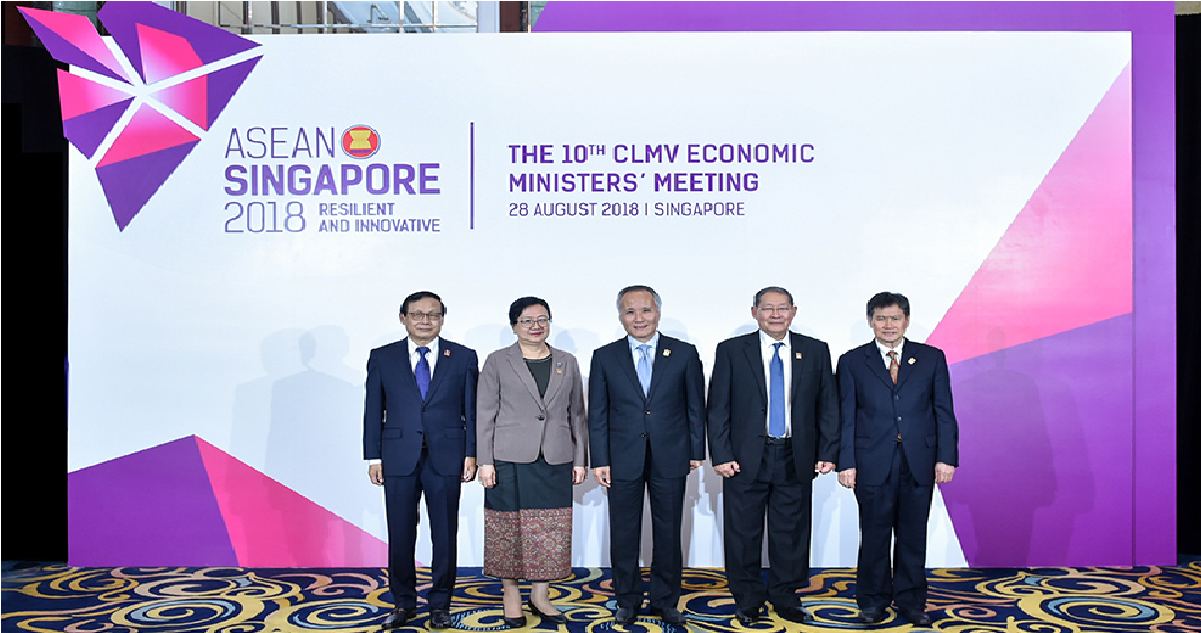ធនាគារជប៉ុន AIIB កំពុងស្វែងរកឱកាសពង្រីកប្រតិបត្តិការរបស់ខ្លួនលើវិស័យអាទិភាពនៅកម្ពុជា
ធនាគារវិនិយោគហេដ្ឋារចនាសម្ព័ន្ធអាស៊ី (AIIB) កំពុងស្វែងរកការពង្រីកការចូលរួមរបស់ខ្លួននៅក្នុងប្រទេសកម្ពុជា ដោយផ្តោតលើវិស័យសំខាន់ៗដូចជា វិស័យថាមពល, ការអភិវឌ្ឍទីក្រុង-ទីប្រជុំជន និងជាពិសេសវិស័យហេដ្ឋារចនាសម្ព័ន្ធតភ្ជាប់។ នេះបើតាមជំនួបរវាងសម្ដេចនាយករដ្ឋមន្រ្តី ហ៊ុន ម៉ាណែត និង លោក Jin Liqun ប្រធានធនាគារ ក្នុងឱកាសនៃដំណើរទស្សនកិច្ចការងារផ្លូវការ ពីថ្ងៃទី២៨-៣១ ខែឧសភា ឆ្នាំ២០២៥ នៅទីក្រុងតូក្យូ ប្រទេសជប៉ុន។ ក្នុងជំនួបនេះ លោកប្រធានធនាគារ AIIB បានអរគុណដល់កម្ពុជាដែលបានចូលរួមជាមួយធនាគារ AIIB ក្នុងនាមជាសមាជិកស្ថាបនិកកាលពីឆ្នាំ២០១៦ និងបានឱ្យដឹងនូវប្រតិបត្តិការរបស់ធនាគារ AIIB ព្រមទាំងបានបង្ហាញចំណាប់អារម្មណ៍ក្នុងការស្វែងរកឱកាសពង្រីកកិច្ចសហប្រតិបត្តិការជាមួយកម្ពុជាលើវិស័យសក្ដានុពលមួយចំនួន រួមមាន៖ វិស័យថាមពល, ការអភិវឌ្ឍទីក្រុង-ទីប្រជុំជន និងហេដ្ឋារចនាសម្ព័ន្ធតភ្ជាប់។ លោកប្រធានធនាគារ បានបញ្ជាក់ថា ធនាគារ AIIB បានត្រៀមខ្លួនរួចជាស្រេចក្នុងការចូលរួមសហការជាមួយកម្ពុជា លើវិស័យទាំងនេះ ជាពិសេសវិស័យហេដ្ឋារចនាសម្ព័ន្ធ ដើម្បីរួមចំណែកជាមួយរាជរដ្ឋាភិបាលកម្ពុជាក្នុងការអភិវឌ្ឍប្រកបដោយភាពធន់ និងចីរភាព។ ជាការឆ្លើយតប សម្ដេចនាយករដ្ឋមន្រ្តី បានស្វាគមន៍ចំពោះចំណាប់អារម្មណ៍របស់ធនាគារ AIIB ក្នុងការស្វែងរកឱកាសពង្រីកកិច្ចសហប្រតិបត្តិការលើវិស័យសក្តានុពល ជាមួយកម្ពុជា។ សម្ដេចបវរធិបតី ក៏បានលើកទឹកចិត្តឱ្យធនាគារ AIIB បន្តធ្វើការកាន់តែជិតស្និទ្ធ និងពិភាក្សាលម្អិតជាមួយក្រសួង-ស្ថាប័នពាក់ព័ន្ធកម្ពុជា […]
វិនិយោគិនម៉ាឡេស៊ី បង្ហាញចេតនាចង់មកវិនិយោគនៅកម្ពុជា ខណៈបច្ចុប្បន្នកំពុងធ្វើអាជីវកម្ម៥ប្រភេទនៅក្នុងតំបន់
ស្ថិតក្នុងការអភិវឌ្ឍន៍ដ៏សំខាន់សម្រាប់ទិដ្ឋភាពសេដ្ឋកិច្ចរបស់កម្ពុជា Bin Zayed International Berhad (BZI) ដែលជាក្រុមហ៊ុនសាជីវកម្មម៉ាឡេស៊ីដ៏លេចធ្លោមួយនៅក្នុងតំបន់បានបង្ហាញពីចំណាប់អារម្មណ៍យ៉ាងខ្លាំងក្នុងការពង្រីកការវិនិយោគរបស់ខ្លួននៅក្នុងព្រះរាជាណាចក្រកម្ពុជា។ នេះបើតាមជំនួបរវាងសម្តេចនាយករដ្ឋមន្រ្តី ហ៊ុន ម៉ាណែត និងលោក Dato’ Sri Dr. Shamir Kumar Nandy ប្រធានក្រុមហ៊ុន BZI នៅថ្ងៃទី២៧ ខែឧសភា ឆ្នាំ២០២៥ នៅទីក្រុងគូឡាឡាំពួ ប្រទេសម៉ាឡេស៊ី។ គួរបញ្ជាក់ថា ក្រុមហ៊ុន BZI បច្ចុប្បន្នមានសកម្មភាពអាជីវកម្មនៅក្នុងវិស័យសំខាន់ៗចំនួនប្រាំនៅតាមបណ្តាប្រទេសនានា ដោយផ្តោតលើវិស័យអចលនទ្រព្យ សេវាកម្មហិរញ្ញវត្ថុ ថាមពលស្អាត ការថែទាំសុខភាព និងការអប់រំ។ ក្រុមហ៊ុន BZI បានមើលឃើញពីសក្តានុពលយ៉ាងខ្លាំងនៅក្នុងបរិយាកាសវិនិយោគដ៏អំណោយផលរបស់ប្រទេសកម្ពុជា ហើយក៏មានបំណងចង់ស្វែងរកឱកាសផ្សេងៗក្នុងប្រទេសនេះផងដែរ។ នាឱកាសនោះ លោកប្រធាន Nandy បានចែករំលែកនូវការយល់ដឹងអំពីប្រតិបត្តិការក្នុងតំបន់ដែលកំពុងដំណើរការរបស់ BZI និងបានសង្កត់ធ្ងន់លើការប្តេជ្ញាចិត្តរបស់ក្រុមហ៊ុនក្នុងការធ្វើជាដៃគូជាមួយប្រទេសកម្ពុជាសម្រាប់ការរីកចម្រើនទៅវិញទៅមកផងដែរ។ លើសពីនេះ លោកបានកត់សម្គាល់ថា ចំណាប់អារម្មណ៍របស់ BZI កើតចេញពីបរិយាកាសវិនិយោគវិជ្ជមានដែលជំរុញដោយរដ្ឋាភិបាលកម្ពុជា ដែលបើកចំហសម្រាប់ការវិនិយោគពីបរទេស។ ជាការឆ្លើយតប សម្ដេចនាយករដ្ឋមន្រ្តី បានស្វាគមន៍ចំពោះចំណាប់អារម្មណ៍របស់ក្រុមហ៊ុន ដោយបានលើកឡើងនូវគោលនយោបាយ និងការលើកទឹកចិត្តនានា ដើម្បីគាំទ្រការវិនិយោគ […]
រយៈពេលជិតកន្លះឆ្នាំនេះ កម្ពុជាលក់សំបុត្រទេសចរណ៍បានជាង ២៥លានដុល្លារ
ក្នុងរយៈពេល៥ខែ គិតចាប់ពីខែមករា ដល់ខែឧសភា ឆ្នាំ២០២៥នេះ កម្ពុជារកចំណូលបាន ២៥.៦១២.៧៩៧ដុល្លារ ពីការលក់សំបុត្រចូលទស្សនារមណីយដ្ឋានល្បីៗដូចជា ប្រាសាទអង្គរ, ប្រាសាទកោះកែរ, ប្រាសាទបេងមាលា, ភ្នំក្បាលស្ពាន និងការជិះទូកកម្សាន្ត។ នេះបើយោងតាមរបាយការណ៍ចេញផ្សាយដោយគ្រឹះស្ថានអង្គរនៅថ្ងៃទី០១ ខែមិថុនា ឆ្នាំ២០២៥។ របាយការណ៍ខាងលើបានឱ្យដឹងថា ក្នុងរយៈពេលជិតកន្លះឆ្នាំមកនេះ (៥ខែដើមឆ្នាំ២០២៥) កម្ពុជាទទួលបានភ្ញៀវទេសចរបរទេសចំនួន ៥២៧.៥៧៧នាក់ ដែលបានទិញបណ្ណចូលទស្សនារមណីយដ្ឋានអង្គរ បើគិតជាទឹកប្រាក់មានចំនួនសរុប ២៤.៥៦៩.០២៤ដុល្លារ កើន ១០,៦៤% ធៀបនឹងរយៈពេលដូចគ្នាកាលពីឆ្នាំ២០២៤។ ដោយឡែកការលក់សំបុត្រចូលទស្សនារមណីយដ្ឋានអង្គរក្នុងខែឧសភា តែឯង អាចរកចំណូលបានប្រមាណ ២.៣៦០.២១៤ដុល្លារ ពីភ្ញៀវទេសចរបរទេសចំនួន ៥២.៧៦៧នាក់ កើនឡើង ៣,១០% ធៀបនឹងរយៈពេលដូចគ្នាកាលពីឆ្នាំ២០២៤។ ក្រៅពីចំណូលបានពីការលក់សំបុត្រចូលទស្សនារមណីយដ្ឋានអង្គរ គ្រឹះស្ថានអង្គរបានរកចំណូលបន្ថែមពីការលក់សំបុត្រចូលទស្សនារមណីយដ្ឋានផ្សេងៗទៀត រួមមាន៖ ប្រាសាទកោះកែរ, ប្រាសាទបេងមាលា, ភ្នំក្បាលស្ពាន និងការជិះទូក បើគិតជាទឹកប្រាក់សរុបបានចំនួន ១.០៤៣.៧៧៣ដុល្លារ។ ដើម្បីបង្កើនបទពិសោធន៍ដល់ភ្ញៀវអន្តរជាតិ ទាំងរដ្ឋាភិបាលកម្ពុជា និងមូលនិធិអង្គរ បានអនុវត្តគំនិតផ្តួចផ្តើមជាយុទ្ធសាស្ត្រ សំដៅលើកកម្ពស់វិស័យទេសចរណ៍។ ផែនការទាំងនេះផ្តោតលើការទាក់ទាញអ្នកធ្វើដំណើរមកពីជុំវិញពិភពលោក ដោយសង្កត់ធ្ងន់លើបេតិកភណ្ឌវប្បធម៌ដ៏សម្បូរបែបរបស់ប្រទេសកម្ពុជា និងទេសភាពធម្មជាតិដ៏គួរឱ្យភ្ញាក់ផ្អើល។(អានបន្ថែម, បន្ថែម និងបន្ថែម) - Video Advertisement […]
ចិន និងអូស្រា្តលី បង្ហាញផែនការពង្រីកការវិនិយោគរបស់ខ្លួនក្នុងវិស័យកសិកម្មនៅខេត្តកំពង់ធំ
ក្នុងការអភិវឌ្ឍន៍ប្រកបដោយជោគជ័យសម្រាប់វិស័យកសិកម្ម អ្នកវិនិយោគចិន និងអូស្ត្រាលីគ្រោងនឹងពង្រីកការវិនិយោគរបស់ពួកគេនៅក្នុងខេត្តកំពង់ធំ ប្រទេសកម្ពុជា។ នេះបើតាមជំនួបដាច់ដោយឡែករវាង លោក នួន ផារ័ត្ន អភិបាល នៃគណៈខេត្តកំពង់ធំ ជាមួយភាគីក្រុមហ៊ុនទាំងពីរ នៅថ្ងៃទី២៧ ខែឧសភា ឆ្នាំ២០២៥។ ជាបឋម លោកអភិបាលខេត្ត បានទទួលជួប លោក HU Jun អគ្គនាយកសហគ្រាសផលិតគ្រាប់ស្វាយចន្ទី កម្ពុណាត់ អាហ្គ្រោ ប្រដាក់ ឯ.ក (Kampu Nuts Agro Product Co., Ltd.) ដែលបាន និងកំពុងមានសកម្មភាពវិនិយោគក្នុងវិស័យកែច្នៃគ្រាប់ស្វាយចន្ទី ក្នុងភូមិសាស្ត្រស្រុកតាំងគោក ខេត្តកំពង់ធំ ដើម្បីពិភាក្សាអំពីពង្រីកទំហំវិនិយោគរបស់ក្រុមហ៊ុនបន្ថែមទៀត។ ក្នុងជំនួបនេះ លោក នួន ផារ័ត្ន បានបង្ហាញនូវសក្តានុពលក្នុងការវិនិយោគលើវិស័យស្វាយចន្ទី នៅក្នុងភូមិសាស្ត្រខេត្តកំពង់ធំ ព្រមទាំងគោលនយោបាយជាតិ ស្តីពីស្វាយចន្ទី ក៏ដូចជាគម្រោងសួនកសិ-ឧស្សាហកម្ម ផ្តោតជាពិសេសលើការកែច្នៃស្វាយចន្ទី។ បន្ទាប់ពីជំនួបខាងលើនេះ លោកអភិបាលខេត្ត ក៏បានទទួលជួប លោក Ian OLIFENT ប្រធានក្រុមប្រឹក្សាភិបាលក្រុមហ៊ុន ជេ7-អេអេជី […]
រយៈពេល៩ខែ ក្រុមប្រឹក្សាអភិវឌ្ឍន៍កម្ពុជារកចំណូលបាន ៥,៧ពាន់លានរៀល តាមរយៈប្រព័ន្ធបច្ចេកវិទ្យាឌីជីថល
ក្នុងរយៈពេល ៩ខែ គិតចាប់ពីខែសីហា ឆ្នាំ២០២៤ ដល់ខែមេសា ឆ្នាំ២០២៥ ក្រុមប្រឹក្សាអភិវឌ្ឍន៍កម្ពុជា បានប្រមូលចំណូលប្រមាណ ៥,៧ពាន់លានរៀល ស្មើនឹងប្រមាណជា ៣៥% នៃចំណូលពីសេវាសាធារណៈរបស់ខ្លួន តាមរយៈប្រព័ន្ធបច្ចេកវិទ្យាឌីជីថល។ បើតាមពិធីចុះអនុស្សរណៈនៃការយោគយល់គ្នារវាងក្រុមប្រឹក្សាអភិវឌ្ឍន៍កម្ពុជា និងធនាគារ អេស៊ីលីដា ភីអិលស៊ី នៅថ្ងៃទី២០ ខែឧសភា ឆ្នាំ២០២៥ បានឱ្យដឹងថា ការប្រមូលចំណូលសេវាសាធារណៈ តាមរយៈការតភ្ជាប់ប្រព័ន្ធរបស់ធនាគារ អេស៊ីលីដា ភីអិលស៊ី ជាមួយប្រព័ន្ធទូទាត់ប្រាក់រួម cdcOSP របស់ ក.អ.ក. ដែលបានដាក់ឱ្យដំណើរការតាំងពីថ្ងៃទី៣១ ខែកក្កដា ឆ្នាំ២០២៤ មក។ ប្រព័ន្ធថ្មីនេះគឺជាផ្នែកមួយនៃគំនិតផ្តួចផ្តើមថ្នាលទិន្នន័យវិនិយោគកម្ពុជា cdcIPM Hub។ តាមរយៈសហប្រតិបត្តិការនេះ បានបង្ហាញឱ្យឃើញនូវការបង្កើនល្បឿននៃការធ្វើឌីជីថលូបនីយកម្ម សម្រាប់លើកកម្ពស់បរិយាកាសវិនិយោគនៅកម្ពុជា ព្រមទាំងផ្តល់ជម្រើសដ៏សំបូរបែបដល់អ្នកស្នើសុំសេវាសាធារណៈរបស់ ក.អ.ក. ក្នុងការទូទាត់ប្រាក់កម្រៃសេវា។ ប្រព័ន្ធ cdcOSP នេះ ត្រូវបានរៀបចំឡើង ដើម្បីប្រមូលចំណូលសេវាសាធារណៈរបស់ ក.អ.ក. ដែលផ្តល់លទ្ធភាពឱ្យប្រព័ន្ធគ្រប់គ្រងគម្រោងវិនិយោគកម្ពុជា cdcIPM និងប្រព័ន្ធផ្តល់សេវាសាធារណៈផ្សេងៗទៀតរបស់ ក.អ.ក. ធ្វើការទូទាត់ប្រាក់ក្នុងនិងឆ្លងធនាគារតាមរយៈ Bakong KHQR […]
កម្ពុជាទទួលបានគម្រោងថ្មីចំនួន១២ មានទុន $១៥៥លាន បន្ថែមក្នុងវិស័យឧស្សាហកម្ម និងថាមពល
ដើម្បីជំរុញនិងលើកកម្ពស់ទិដ្ឋភាពសេដ្ឋរបស់ខ្លួន ក្រុមប្រឹក្សាអភិវឌ្ឍន៍កម្ពុជា បាននិងកំពុងពិនិត្យពិភាក្សាលើគម្រោងវិនិយោគមានលក្ខណៈសម្បត្តិគ្រប់គ្រាន់ចំនួន១២គម្រោង ដែលមានទុនវិនិយោគសរុប ១៥៥លានដុល្លារ បន្ថែមចូលក្នុងវិស័យឧស្សាហកម្ម និងហេដ្ឋារចនាសម្ព័ន្ធ។ នេះបើតាមកិច្ចប្រជុំចេញចូលតែមួយដឹកនាំដោយឯកឧត្តម ជា វុទ្ធី អគ្គលេខាធិការគណៈកម្មាធិការវិនិយោគកម្ពុជា នៅថ្ងៃទី៣០ ខែឧសភា ឆ្នាំ២០២៥។ គម្រោងទាំងនេះមិនត្រឹមតែត្រូវបានរំពឹងថានឹងជួួយជំរុញកំណើនសេដ្ឋកិច្ចប៉ុណ្ណោះទេ ប៉ុន្តែក៏នឹងជួួយបង្កើតការងារបានប្រមាណ ៧,៥ពាន់កន្លែង សម្រាប់ប្រជាពលរដ្ឋក្នុងតំបន់ផងដែរ។ គួរបញ្ជាក់ថា មុខសញ្ញាវិនិយោគក្នុងវិស័យឧស្សាហកម្មចំនួន ១១គម្រោង (រោងចក្រកែច្នៃលោហធាតុ, ផលិតក្រដាសកាតុង, ផលិតផលិតផលពិធីបុណ្យនានា-សម្លៀកបំពាក់បុណ្យ Halloween តុក្កតា ទៀន និងសម្ភារៈបន្ទាប់បន្សំ, ផលិតសម្ភារៈសត្វចិញ្ចឹម និងសម្ភារៈក្មេងលេង, ផលិតកម្រាលជ័រ និងបន្ទះក្តារ, ផលិតថ្នាំលាប និងទឹកថ្នាំ (ពីសារធាតុគីមី), ផលិតអំពូលភ្លើង សម្ភារៈលម្អក្នុងផ្ទះ និងគ្រឿងបន្ទាប់បន្សំអគ្គិសនីគ្រប់ប្រភេទ, ផលិតកង្ហារគ្រប់ប្រភេទ និងគ្រឿងបន្ទាប់បន្សំអេទ្បិចត្រូនិកគ្រប់ប្រភេទ, ផលិតគ្រឿងសង្ហារិម, ផលិត និងផ្គុំដំទ្បើងកង្ហារ និងផលិតតុក្កតាគ្រប់ប្រភេទ) និងវិស័យហេដ្ឋារចនាសម្ព័ន្ធចំនួន១គម្រោង (អភិវឌ្ឍន៍ស្ថានីយផលិតអគ្គិសនីដើរដោយថាមពលពន្លឺព្រះអាទិត្យអានុភាព១០០មេហ្កាវ៉ាត់ ខេត្តបាត់ដំបង)។ គម្រោងវិនិយោគទាំង១២ខាងលើនេះ គ្រោងនឹងបោះទីតាំងនៅរាជធានីភ្នំពេញ ខេត្តកណ្តាល ខេត្តតាកែវ ខេត្តកំពង់ស្ពឺ ខេត្តព្រះសីហនុ ខេត្តប៉ៃលិន និងខេត្តបាត់ដំបង […]



 English
English







